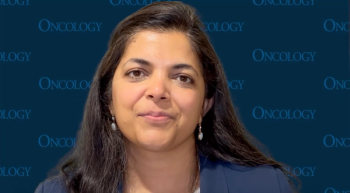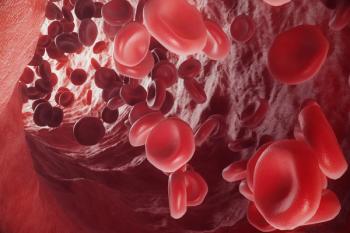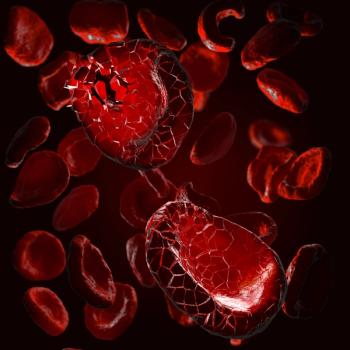
- ONCOLOGY Vol 13 No 3
- Volume 13
- Issue 3
Results of High-Dose Therapy and Autologous Stem Cell Transplant in Patients With Stage IV Hodgkin’s Disease: The Impact of Disease Status and Prior Radiotherapy
About 20%-50% of patients with stage IV Hodgkin’s disease may suffer a relapse after initial chemotherapy-induced remission. Consolidative radiotherapy has been used in combination with chemotherapy to reduce relapse at areas of initial bulky disease; however, no survival benefit has been shown in the few randomized studies.
About 20%-50% of patients with stage IV Hodgkins disease may suffer a relapse after initial chemotherapy-induced remission. Consolidative radiotherapy has been used in combination with chemotherapy to reduce relapse at areas of initial bulky disease; however, no survival benefit has been shown in the few randomized studies.
The purpose of this study was to evaluate the role of high-dose therapy and autologous stem-cell transplantation (SCT) in the treatment of patients with stage IV Hodgkins disease and to evaluate the impact of prior radiotherapy on the outcome of autologous SCT. A retrospective analysis was performed in 65 patients with stage IV Hodgkins disease who underwent autologous SCT at our institution between February 1987 and August 1997. There were 35 (54%) males and 30 (46%) females, with a median age of 32 years (range, 14-60 years). At diagnosis, 55 (85%) of patients had B-symptoms, 39 (60%) had bone marrow or lung involvement, 12 (18%) had ³ 2 extranodal sites, and 16 (34%) had hemoglobin < 10.5 g/dL. Disease status at transplant was: first complete response (CR)/partial response (PR) in 17 (26%) patients, induction failure (IF) in 12 (18%), and relapse or ³ 2 CRs in 37 (56%). The median number of chemotherapy regimens was two (range, one to three), and 27 (42%) of patients had received prior radiation therapy, including 20 as induction therapy and 7 as salvage therapy. Median time from diagnosis to SCT was 18 months (range, 5-199 months). For patients transplanted in relapse or IF, 19 had extranodal involvement at conditioning, including 10 with bone marrow or lung involvement, and 8 had ³ 2 extranodal sites.
The conditioning regimens were either fractionated total-body irradiation (1,200 cGy) in 42 patients (65%), or carmustine (450 mg/m2) in 23 patients (35%), in combination with etoposide (60 mg/kg) and cyclophosphamide (Cytoxan, Neosar; 100 mg/kg). Currently, 37 patients are alive in remission, 19 have relapsed (13 died), and 9 have died from transplant-related complications. The median follow-up for all living patients is 3.9 years (range, 1.0-11.5 years). The median time to relapse was 6.8 months (range, 1.6-42.9 months). The 3-year Kaplan-Meier overall survival (OS), disease-free survival (DFS), and relapse rates for all patients were 74% (95% confidence interval [CI], 61%-83%), 63% (95% CI, 51%-74%), and 27% (95% CI, 17%-40%), respectively. None of the patients transplanted in first CR/PR have relapsed. The 3-year DFS for patients transplanted in first CR/PR was 100%, compared with 55% (95% CI, 26%-80%) for IF and 50% (95% CI, 37%-66%) for relapsed patients (P = .001; log-rank test).
By univariate survival analysis, disease status at transplant predicted for relapse (P = .02), DFS (P = .003), and OS (P = .02); bone marrow or lung involvement had a negative impact on DFS (P = .05); and extranodal sites at SCT and prior radiation both increased the risk of relapse (P = .02 and .04, respectively). By stepwise Cox regression analysis, prior radiation remained a significant predictor for relapse (P = .04; risk ratio, 2.79 [95% CI, 1.05-7.46]). When disease status at SCT was not included in the model, both the number of prior regimens and bone marrow or lung involvement predicted for DFS (P = .05 for both).
CONCLUSION: We conclude that: (1) high-dose therapy plus autologous SCT is an effective salvage therapy for patients with stage IV Hodgkins disease who have relapsed or have primary refractory disease; (2) in this analysis, patients with prior radiotherapy are at risk for relapse after autologous SCT; and (3) the outcome of autologous SCT is best when performed during first remission in unfavorable advanced-stage Hodgkins disease
Articles in this issue
almost 27 years ago
WHO Declares Lymphatic Mapping to Be the Standard of Care for Melanomaalmost 27 years ago
Navelbine Increased Elderly Lung Cancer Patients’ Survivalalmost 27 years ago
Consensus Statement on Prevention and Early Diagnosis of Lung CancerNewsletter
Stay up to date on recent advances in the multidisciplinary approach to cancer.
















































































